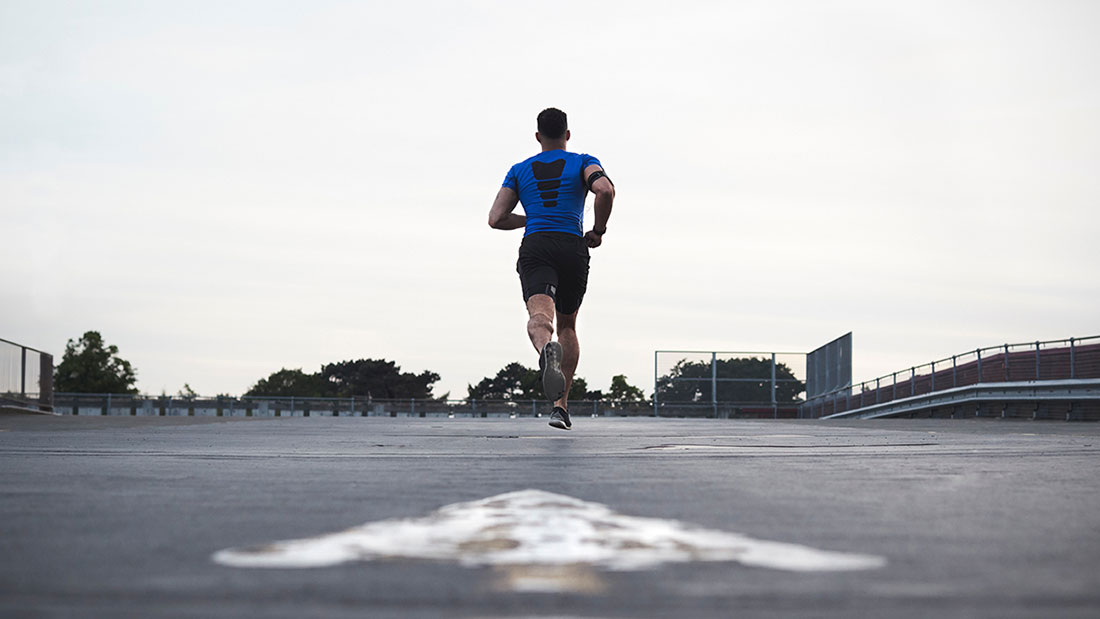
A Guide To Running
As a sports activity, many people have a love / hate relationship with running, yet it has undeniable health and well-being benefits. As life becomes more sedentary, our health is impacted by processed foods and toxic fats, and it becomes costly to exercise and eat well, the case to just ‘get running’ has never made more sense.
One of the most common roadblocks for people getting involved with running, is mustering some motivation, but it’s well worth it, because the results can be life-changing. So, if you’re starting out, or need some renewed motivation, this article is for you.
Move it or lose it.
To improve your fitness, it is recommended people spend 30 minutes, 3 times per-week exercising. There is value in high and low-impact activity, but if you are running or walking fast enough to make an impact, you shouldn’t be able to comfortably chat.
For those who are working on their core, whether through Pilates, Yoga, and other weight training activities, your core strength will help you increase your range of symmetry, meaning that integrating core strength exercises into your fitness program will maximise the positive effects of running and will protect your joints according to new research.
It’s good for your mental health and reduces cognitive decline.
According to writer Ryan Phan in his article in The Medium, there are significant links between running, improved mental health, and lessened cognitive decline.
In Ryan’s interview with Dr. David Linden, a neuroscience professor at the Johns Hopkins University of Medicine, Dr Linden said “regular cardiovascular exercise sparks the growth of new blood vessels and new brain cells in a process called neurogenesis, which can lead to an improvement in brain performance and preventing cognitive decline.”
He also said that “exercise has a dramatic anti-depressive effect…It blunts the brain’s response to physical and emotional stress.”
Get Started With The Run-Walk Method
According to the New York Time fitness Guru, Tara Parke-Pop, The Run-Walk Method is a great way for new runners to get started.
Tara explains that the method was pioneered by the Olympian Jeff Galloway.
“Contrary to what you might think, the technique doesn’t mean walking when you’re tired; it means taking brief walk breaks when you’re not. You can pick whatever ratio of walking and running that works for you,” she explains.
Or Stick With 20 Minutes
The worlds simplest running program, according to Runners World suggests you keep your total ‘running time’ to 20 minutes, which will allow your body time to adapt to the demands of running until you go can stretch it out.
Ryze HQ’s research found that the majority of reputable fitness articles suggested tackling a new running program in much the same way- smaller achievable goals and 20 minutes is a nice, manageable chunk.
From zero, to everyday running hero. A basic program.
- Train three days a week and remember something is better than nothing
- Run or run/walk 20 to 30 minutes
- Rest or cross-train on your off days
- Run at a conversational pace
- Consider taking regular walk-breaks (run 30 seconds, walk 60 seconds).
You can amp up these efforts and take a longer run or run/walk (40 minutes to an hour) on the weekend.
Lastly, there are some basic tips to stay safe while running:
- Watch your natural running ‘form’ and stick to it. It will reduce the chance of injury and the more comfortable that stride will feel and running will become easier and more efficient.
- Warm up for five minutes before you start
- Listen to your body- if your knees or joints feel strained, either modify your method or stop.
- Running on grass or softer surfaces can reduce the impact on your body.
As we mentioned, running has many benefits. It keeps our heart rate pumping, it’s great for cardiovascular strength, provides a good all over work out, and often necessitates getting outside for fresh air and vitamin D. Given it costs next to nothing to get involved, other than a pair of runners and 20 minutes out of your day, the question really isn’t ‘if’ you should start running but ‘when’ you’ll get out there and get moving.